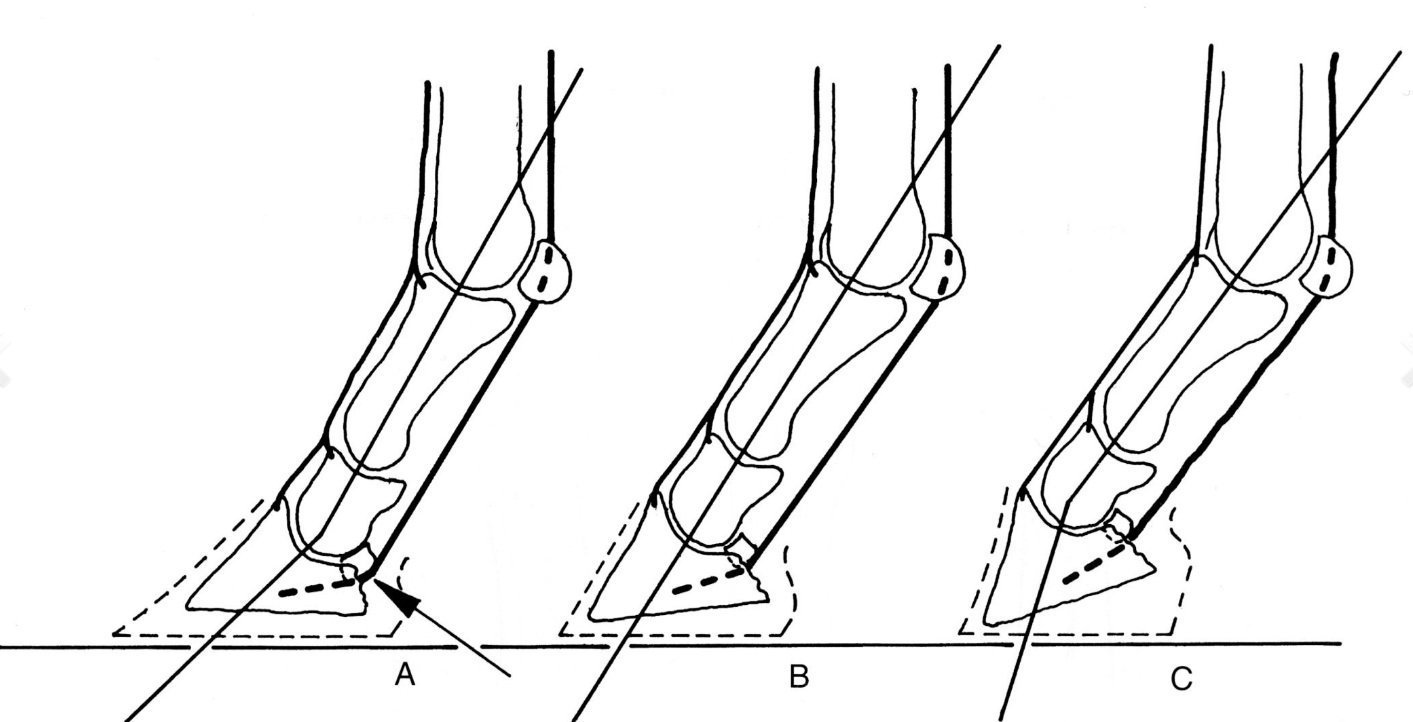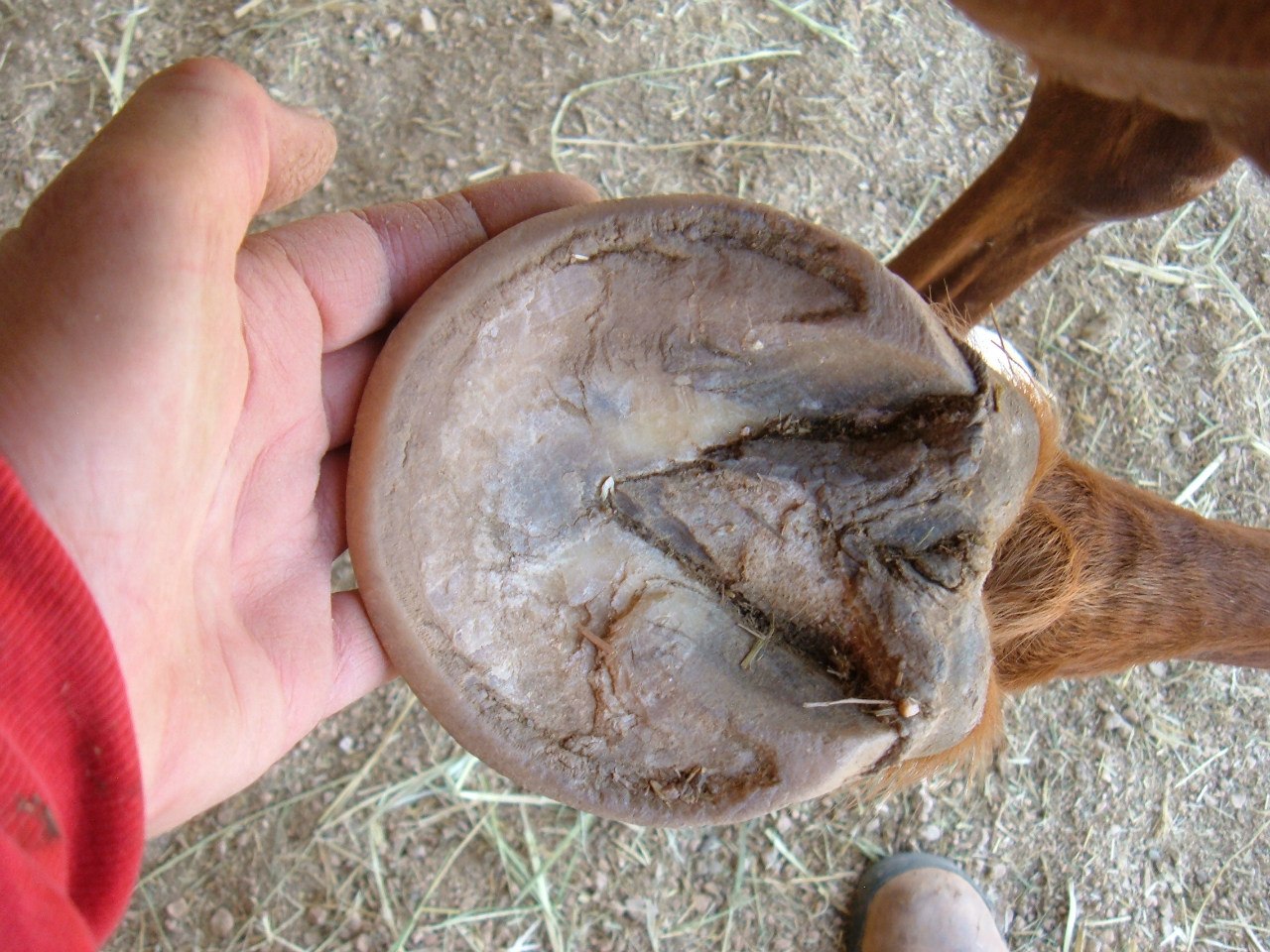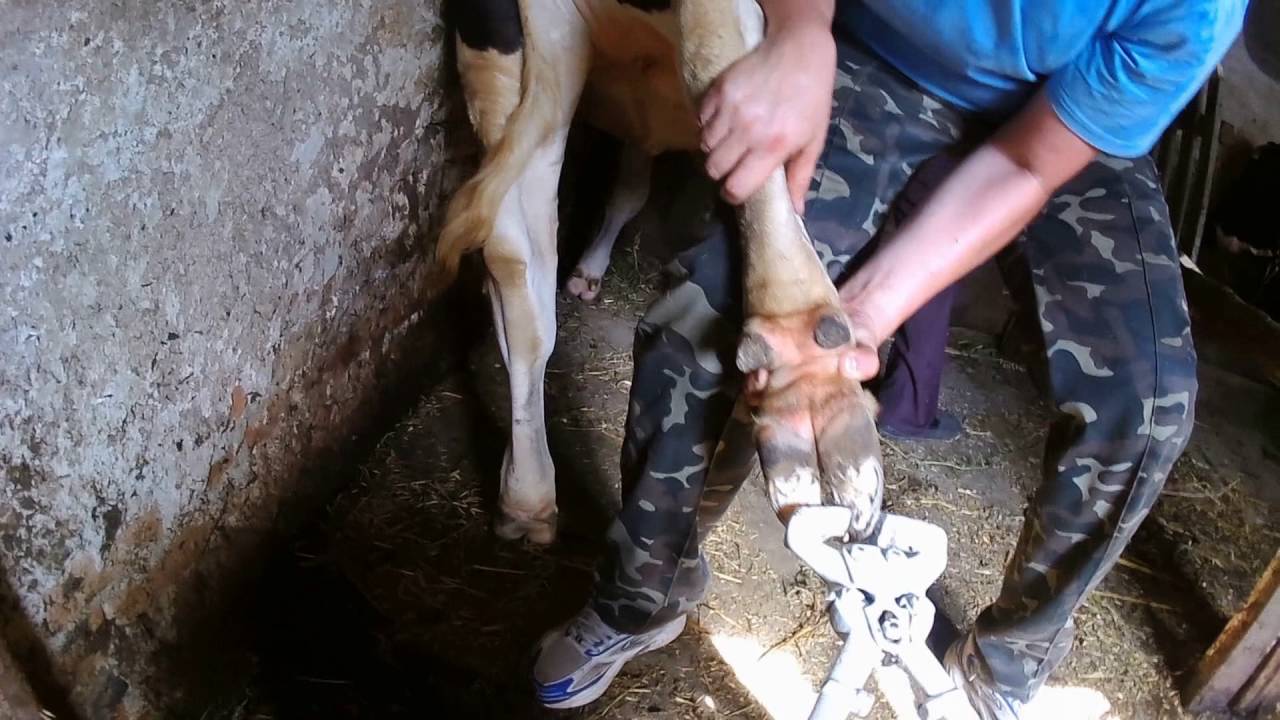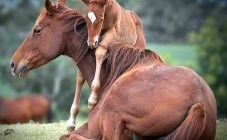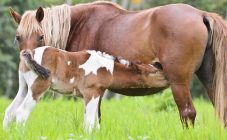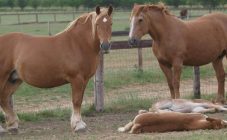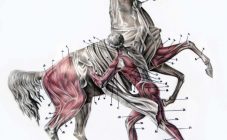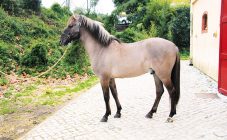Content:
On the horse's legs there are coarse endings, which are called a hoof. Livestock breeders use this term to call the cornea and everything that is in it. So what are the hooves of a horse, and how do you care for them?
Anatomical and physiological features of the hoof
The hoof is the formation around the phalanges. This is a kind of modified skin. In it, the epidermis is a corn. Viewed from an anatomical point of view, the hoof is related to human nails. This includes the top layer and all the elements that are contained within.
This leg formation is of great importance to the horse. It is able to withstand a large body weight of the animal, smooth out the impact force, and prevents the joints from deforming. In addition, thanks to this part of the leg, the animal receives a sufficient amount of blood during exercise.
Equine hoof structure
Don't think that a horse's hoof is just a hard shell.
In fact, this is a very complex structure, which consists of:
- ligaments,
- muscles,
- cartilage,
- bones,
- joints.
In addition, the hoof is composed of the stratum corneum, epidermis, base of the skin and subcutaneous layer.
Hoof appearance:
- Border. It forms in the area of the transition of the scalp into the stratum corneum. The width of the border is no more than six millimeters. The upper part of the border consists of hair follicles and sebaceous glands. This part of the hoof is necessary in order to reduce the load on the skin, binds it to the stratum corneum.
- Corolla. This part is slightly farther than the border. It is also important in the structure of the hoof as it connects the front and side walls and creates shock absorption when the horse is walking or running.
- Hoof wall. It contains the stratum corneum, epidermis and base of the skin.
The cornea contains:
- glaze,
- tubular horn,
- leaf horn.
On the leaf horn are:
- hoof plane,
- barbed areas.
- Sole. This part is a flat plate with an arrow cutout.
Consists of:
- epidermis,
- the basis of the skin.
Performs a protective function for soft tissues from deformation, which are located deep in the hoof. It grows and regenerates very quickly.
- Crumb. This part is located between the bars and looks like a wedge. It is divided by a longitudinal groove.
Consists of:
- epidermis,
- stratum corneum,
- skin bases,
- subcutaneous layer.
The hooves of a newborn foal have a protective capsule called "larch", which eventually falls off on its own. The baby needs her in order not to damage her internal organs during her stay in the womb. The derivative horse carries its baby for eleven months.
Shape and size
The shape and size of a horse's hoof depends on many factors. First of all, from heredity, as well as from the influence of natural conditions. But the most important thing in this case is the properties of the rock. For example, heavyweight horses have large, spacious hooves. Thoroughbred racehorses have small, narrow hooves that have a sharp slope.
In addition, their appearance also depends on which limbs they are located on. The back "shoe" of the horse is much smaller than the front one and at the same time has a sole concave inward.
The form has several stages of modification throughout life. In most cases, this is due to external factors and the position of the legs. The way the animal is kept affects the appearance of the hoof. If it is constantly in a place where it is always damp, then the hooves will be wide. A dry stall provides a narrow, tidy horse shoe. The form is also influenced by the way the animal is exploited.
Signs of a healthy hoof
To keep the hooves healthy at all times, it is necessary that the horse receives the load evenly. In addition, it is imperative to take care of the limbs, timely trim the cornea. In this case, you should know that if it is formed correctly, then its surface is covered with a neat full-fledged ball of coating and does not have cracks or holes.
The foot should be concave and free from hints. The arrow should be neat, well-developed and pointed. Cracks and any dents must be completely free.
The shape of the crumbs in a healthy hoof should be regular and slightly rounded. A groove is clearly visible between them. The hoof should be free of dents and cracks.
Signs of problem hooves in a horse
Determining that the hooves have deformation is difficult even for experienced farmers who run their own stud farm, since the horse in such cases does not show any signs of disease at all.
Therefore, it is necessary to adhere to the following recommendations in order to identify pathology:
- It is necessary to learn what healthy limbs in a horse should be, only then can they be examined in order to see the slightest deviations from the norm.
- You should carefully observe the behavior of the animal at rest. A healthy horse has legs straight. If there is a pathology, then the limbs will bend forward to give rest to the heels that are inflamed. The epiphytic bone in a horse can also be deformed in the event of a shoe pathology.
- While walking, a diseased horse will land his foot on the toe, which provokes the appearance of splashes from under the hoof. In addition, the animal begins to bend the wrist to relax the muscles. A healthy horse will rest on the heel.
- To avoid any problems with the limbs of the horse, it is not recommended to shoe a young individual under five years old. The reason for this is not yet fully formed bones. Early shoeing always results in unpleasant health consequences for the horse.
- The neck and shoulders of the animal will tell you about the problems of the hooves. If the shoulder blades do not have a bend, and the neck is very short, thick and dense, this means that the animal has too much muscle mass. This happens when there is any problem with the limbs.
Correct horse shoe
Wild animals from the Horse squad have the ability to move without any additional protection. The limbs of domestic horses must be carefully looked after. The health of the animal depends on it. Shod horses are additionally protected, and they also work more efficiently under loads.
People who "shoe" horses are called blacksmiths.
But you can shoe an animal yourself, if you carefully study the instructions and follow them:
- First comes the preparatory work. Then you need to raise the horse's leg and free it from the remnants of the old worn out horseshoe. Scrub the lower limb completely. To cut off all peeled and coarse layers, pinch off the upper edge of the horse's hoof, which protrudes significantly forward, using a special tool.The sole needs to be leveled and smoothed.
- The next step is to pick up a horseshoe. It should fit. When choosing between a smaller and a larger horseshoe, it is better to choose a larger one, as it can be adjusted to the desired parameters. This is done in three ways: by heating the metal, cold forging or turning.
- The horseshoe is attached to the hoof with nails. You need to do this very carefully so as not to harm the animal. The nails are screwed in at an obtuse angle so that the pointed edge goes from the middle outward. After that, the ends are bent and riveted with a hammer blow.
- After that, you need to clean and sand all the rough sides of the hoof. Every unevenness and rivets are polished so that the horse "shoe" has a beautiful appearance. For this, you can use a regular file. All edges that protrude above the horseshoe must be removed.
- In the same way, procedures should be carried out with the rest of the limbs. But it should be remembered that the hooves of the horse's hind leg are larger than the front.
Hoof cleaning and trimming
To keep horse legs always healthy, they need to be trimmed and cleaned periodically. This procedure is recommended to be done every month or two. Thanks to this process, the horse's hooves will not crack, split and hypertrophy.
To carry out this operation, the following tools should be prepared:
- rasp,
- a special stand,
- forceps.
Having prepared all the necessary things, you can start the operation.
The procedure is as follows:
- To make the operation much easier, the horse's hoof needs to be soaked in a puddle, where it must stand for several minutes. This will soften the shell. The horse must be secured with straps.
- First, you need to clean the inside of the hoof. To do this, use a special hook with a brush. At the same time, they remove hard objects that could get stuck in the deepest places. Then the arrows are completely cleaned, and it is determined how much it is necessary to cut off the corpus callosum.
- You need to stand closer to the horse's shoulder and raise the hoof and fix it between the legs. The walls must be cut from the walls to the toe. At the same time, you need to ensure that you trim the excess evenly.
- To flatten the sole, you need to use a rasp. Alignment needs to be done from heel to toe. In this case, you need to ensure that the surface is flat, without any formations.
To have a healthy horse in your household, first of all, you need proper care of its limbs. At all times you need to ensure that the shape of the hoof is correct. Cornea should be cleaned and trimmed in time.

